GREEK ISLES 2016
|
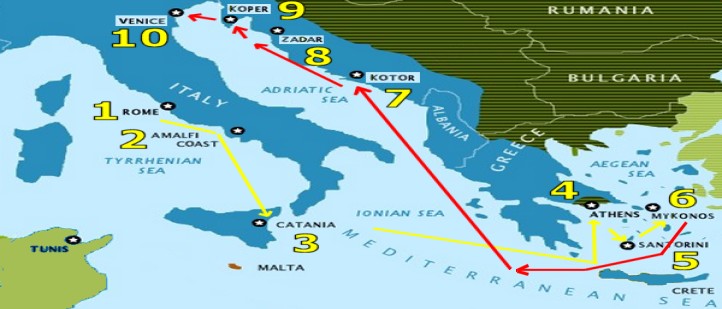 |
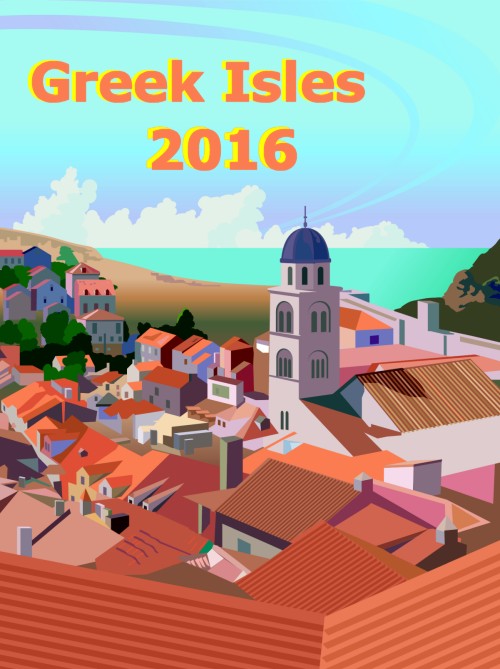 |
2016
Greek Isles Itinerary
|
|
September 08: Day
01
|
Thursday |
Rome, Italy |
|
September 09: Day
02
|
Friday |
Amalfi Coast, Italy |
|
September 10: Day
03
|
Saturday |
Catania, Sicily |
|
September 11: Day
04 |
Sunday |
at sea |
|
September 12: Day
05
|
Monday |
Athens, Greece |
|
September 13: Day
06
|
Tuesday |
Santorini, Greece |
|
September 14: Day
07
|
Wednesday |
Mykonos, Greece |
|
September 15: Day
08
|
Thursday |
at sea |
|
September 16: Day
09
|
Friday |
Kotor,
Montenegro |
|
September 17: Day
10
|
Saturday |
Zadar, Croatia |
|
September 18: Day
11 |
Sunday |
Koper, Slovenia |
|
September 19: Day
12 |
Monday |
Venice,
Italy |
|
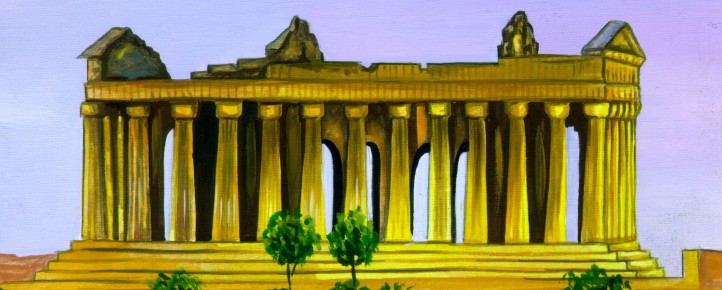 |
Cruise Pricing
(All
rates are per person double occupancy) |
|
Inside Category
Deck 2 |
sold out |
|
Oceanview Category
Deck 2 |
sold out |
|
Veranda Category 2B
Deck 9 |
sold out |
|
Veranda Category 2A
Deck 7 |
sold
out |
|
| |
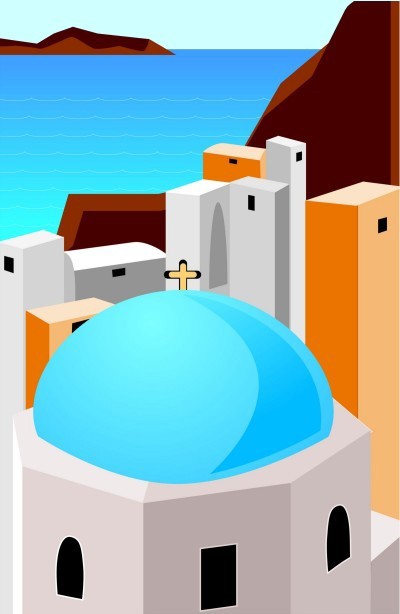 |
A Note from Marla Archer:
Dear Travel Friends,
If there ever was a trip that
included the most desirable and romantic destinations in the
Mediterranean, this adventure would be at the top of the list.
We are planning an 11-night cruise
adventure aboard Celebrity's Constellation
(Sept 8-19). This trip will take
us to
all sorts of beautiful places.
In a way, this is almost like three or four trips in one.
Part One of our trip is Western Italy.
We start the cruise in Rome, then sail to Amalfi Coast
(Italy), and Catania
(Sicily). Part Two of our trip is Athens (Greece),
Mykonos (Greek Isles),
and Santorini (Greek
Isles). Part Three takes us
along the Adriatic coastline with stops in
Kotor (Montenegro),
Zadar (Croatia),
and Koper (Slovenia).
Part Four of our
trip is the legendary
Venice where will end or trip.
Rick
and I definitely will be extending our trip 2,
possibly even 3 nights
in Venice. I will
be sure to find a
suitable hotel for our group stay and
maybe we can explore the city together.
In addition to
this fabulous
itinerary, I have to say this September
sailing is the absolute most
comfortable time of the year.
We get to
visit these destinations with daytime highs in the mid 70's to low 80's;
nighttime lows
in the mid 60's.
There are so many places in the
world to yet see! I turned 60 this
year. With all the inevitable aches and pains arriving
on cue, I am reminded that youth is fleeting. I get
the message - I need to see every
place I can while I am still able.
High on that
list is Venice and the Greek Isles. Although any trip
that includes Rome and Athens will include history
and culture galore, the
main focus will be romantic venues and
natural beauty. This is a
trip that has captured my imagination. As I watch
Mamma Mia for the umpteenth time, I say
the sooner the better.
One note of
caution. Celebrity is receiving a terrific response to
this trip and has refused to expand my group space.
Assuming you trust me enough to know I don't play games, a
word to the wise - my inexpensive cabins will be gone soon.
Book now.
Marla Archer
|
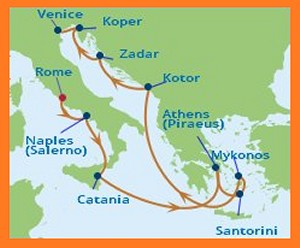 |
Marla's Note: Our cruise ship does not
actually dock in Rome. The port of Civitavecchia is about 40 miles northwest of
downtown Rome.
There is
transportation readily available from Rome to the
cruise ship... I can handle any transfers upon
request.
The trip is about an
hour long.
|
Rick and I have
visited Rome previously and consider this magnificent
city an old friend. We welcome the opportunity to
return again; there is always something exciting to see in
Rome. In my opinion, no other city in the world has so
much history standing right in front of your eyes like Rome
does.
Whether it's the Forum, the Sistine
Chapel, the Pantheon or St. Peter's Basilica that sparks
your interest and intellect, Rome is home to a lifetime's
worth of historical, architectural and spiritual sites.
Depending on traffic, the drive from Civitavecchia to Rome
takes approximately an hour and a half.
Experience the history of Rome as you wander around the
Colosseum, one of the most important monuments of ancient
Rome and the Roman forum. A masterpiece of classical
architecture, the Colosseum is an enormous amphitheater
where gladiators, Christians and wild beasts once battled to
the death in front of 55,000 spectators. Upon completion,
spectacular 100-day celebrations were organized as part of
the opening ceremony in 72 AD. Its name is believed to come
from Nero's enormous statue of Colossus that stood close by.
The Forum was designed to be the centre of social, political
and economic life in the city. The innumerable remains
include the well-conserved triumphal arch of Emperor
Septimius Severus, with reliefs depicting his victories and
the base of the Temple of Saturn with its eight columns and
their splendid Ionic capitals. The 'Rostrum' is the famous
platform from which Mark Antony gave his oration in
Shakespeare's play after Julius Caesar's assassination. The
platform became the setting for many important events in
Rome's history. It was named the 'rostrum' after the bows of
the ships that form the decorative motif. The Temple of
Vesta was the home of the Vestal Virgins, charged with
keeping the sacred flame alight. The circular foundations
still remain, near to a garden in which traces of the House
of the Vestal Virgins can still be seen. The Basilica of
Constantine and Massentius was used as the court, and the
three remaining barrel-vaulted naves give an idea of its
gigantic structure. The Arch of Titus celebrates victories
in Judea, and in the reliefs you can see the spoils of war,
including an altar and a seven-armed chandelier. Admission
is free; guide tours in English cost EUR3.20
Be sure to visit the Vatican
Museum, where you can walk through the many rooms that house
the largest art collection in the world. The Vatican is
among the most important historical sites in the world. The
seat of the Holy Roman Catholic Church, The Vatican is also
the home of the Pope. As the smallest state in the world,
the Vatican has figured in key events throughout history.
Occupying about one half kilometer of Rome, The Vatican is
further significant because of its fabulous architecture,
religious, and artistic treasures.
It was Pope Julius II della Rovere
in the 16th century who commissioned Michelangelo to paint
the history of creation on the ceiling of the Sistine
Chapel. Among countless other notable events in the history
of this important city are the convening of the College of
Cardinals, at the death of a reigning Pontiff, for the
purposes of electing a new Pope. No visit to Rome is
complete without an excursion to The Vatican, a place so
steeped in history and tradition that you will never forget
it.
Travel through the magnificent St. Peter’s Basilica, the
largest church in the world. . Construction began in 1452 on
the site where St. Peter was buried and took over 100 years
to build. It rests on 800 pillars and is littered with 44
altars. During the next 200 years, such famous masters as
Bramante, Michelangelo, Raphael and Bernini worked on its
design and created an unparalleled masterpiece. View
Michelangelo's "Pieta" and the 85-foot-high Bernini Pulpit.
Admire one of the many masterpieces created by Michelangelo,
the famous statue of Moses. This majestic bearded figure is
depicted holding the tablets of the Ten Commandments.
If this is your first visit to Rome time, you must take in
the Sistine Chapel. It is considered a masterpiece of
Renaissance art. Dominating the chapel is Michelangelo’s
ceiling paining of the “Creation of the World.”. The Sistine
Chapel receives 50 million monthly visitors. The Chapel was
built somewhere between 1477 and 1481 by Pope Sixtus IV.
From 1480 to 1483, famous artists of Renaissance, such as
Botticelli, Perugino, and Ghirlandaio, decorated the walls.
After twenty years, Julius II commissioned Michelangelo to
decorate the ceiling in 1508. Today, after the restoration,
tourists can visit the chapel and see Michelangelo's “Last
Judgment.” You will invariably find the Sistine Chapel
crowded with hundreds of tourists, so be prepared. The best
way to see it is to go to the Vatican Museums early, so that
you're among the first in line when they open. Silence
should be observed and photography is not prohibited.
The Pantheon was commissioned by Marcus Agrippa, restored by
Domitian, and subsequently rebuilt by Hadrian (who added the
dome) before being turned into a church in the early 7th
century by Pope Boniface IV. The building's sole source of
light is the opening at the dome's apex (the oculus);
according to popular legend, this formed the base for the
bronze pinecone that is now in the Vatican's 'Pigna'
courtyard, where it is used as a fountain. Many famous
Italians are buried in the Pantheon, including Renaissance
painter Raphael and King Vittorio Emanuele I.
No visit to Rome can be complete without a stop at the
Fontana di Trevi. Tradition has it that throwing a coin over
your left shoulder into the fountain guarantees a swift
return to the world's most beautiful city. Anita Ekberg's
dip in it was immortalized in Fellini's 'La Dolce Vita', and
Italian actor Toto even sold it to an American, passing
himself off as its owner. Earlier it was the setting for the
award-winning "Three Coins in the Fountain" motion picture,
ensuring its popularity worldwide. Designed by Nicola Salvi
for Pope Clemente XII, it was completed in the second half
of the 1700s. The statues in the centre represent Neptune
supported by Tritons on either side while rococo-style Poli
Palace provides the perfect backdrop.
If time permits, take a visit to Trastevere.
This area of Rome was originally built to be a city
port where storehouses held goods at the time of Augustus
and continued to do so until the end of the 19th century. Trastevere then became a downtown market residential quarter
and has now developed into a very desirable quarter. The
heart of the district is Piazza di Santa Maria in Trastevere
with its lovely church, a 17th century palazzo and a
fountain in the middle which is probably Rome's oldest,
having been designed by architects such as Bernini, Fontana
and Della Porta. There are still some well-conserved
medieval houses
If you have the extra time, explore the flavors and history
of Etruscan Italy. Pre-dating the Roman Empire, the Tuscia
region has been the cradle of the Etruscan civilization and
is evident in hilltop Tuscania, with its roots dating from
the 9th century B.C., contrasting with the Renaissance
gardens, fountains, pavilions and maze of Villa Lante.
Rome isn't the only place to visit Italy.
Hardly. Leaving the port area and heading north
from Civitavecchia, you will view the warm colors of the
Etruscan countryside. If you get
the chance, make your way to Bagnaia. Stop by and
appreciate a visit to the Renaissance gardens of Villa Lante.
To create these beautiful gardens, one of the greatest
architects of the time, Vignola, was called upon. Fountains,
pavilions and a box-tree maze were all combined to create a
peaceful yet playful atmosphere.
Walk through these inspirational
and often whimsical gardens, taking time to enjoy the
serenity and beauty of the setting. Then proceed to the lake
of Bolsena and stop for views of the lake and the islands
Bisentina and Martana Standing at the top of a rocky hill
overlooking the Maremma region, Tuscania’s Etruscan and
Renaissance buildings have been beautifully restored and
still reflect the Etruscan history. Walk through the narrow
cobblestones lanes of this charming village and take in the
views of the surrounding valleys.
Be sure to take plenty of Euros.
The euro is the currency of the European Union
and the official currency in
Italy. Many stores and restaurants accept major credit
cards, which usually offer a good exchange rate. When
shopping remember there is a value-added tax to most
purchases.
One more thing.
Rick has written two extensive stories about our previous
visits to Rome. If you get the chance to read them,
you will come to realize Rome is an unusually fascinating
place to visit... and maybe a bit challenging as well.
You will soon
learn Rick has gotten into more trouble in Rome than all our
other 30 cruises combined. If you ever want to
irritate him, just whisper "Evil Map of Rome".
Fortunately, I
think he has the place figured out now, but if he doesn't, I
do. Our previous experience should come in handy in
case you have any questions. M.A.
|
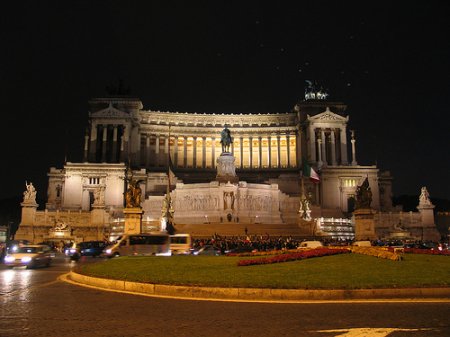
Victor Emanuel Monument
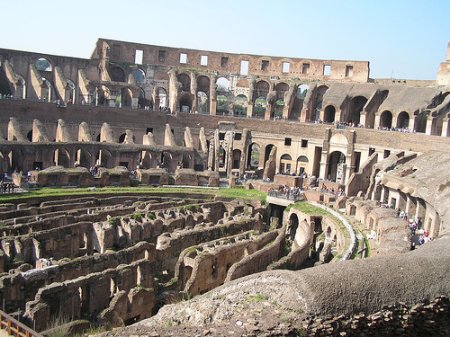
Roman
Coliseum, one the new Wonders of the World
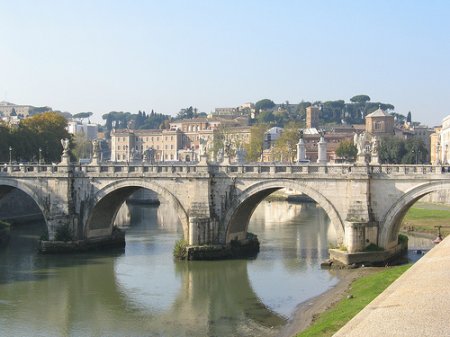
Castle
Saint Angelo
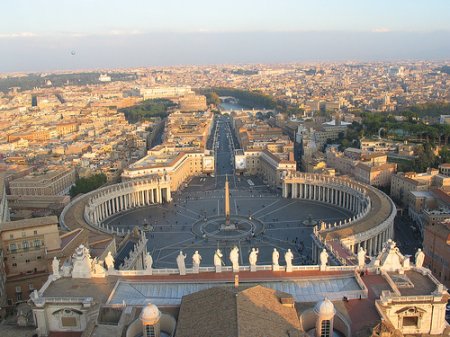
View
from the Basilica
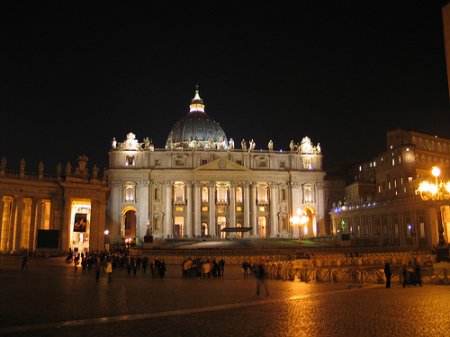
St
Peter's Basilica
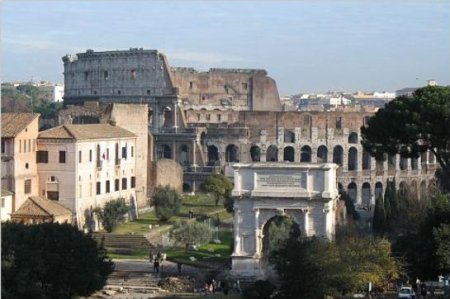
The Roman Coliseum
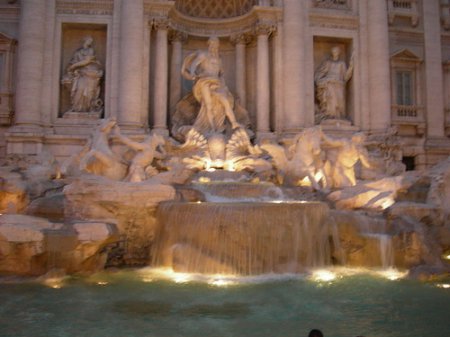
The
Trevi Fountain |
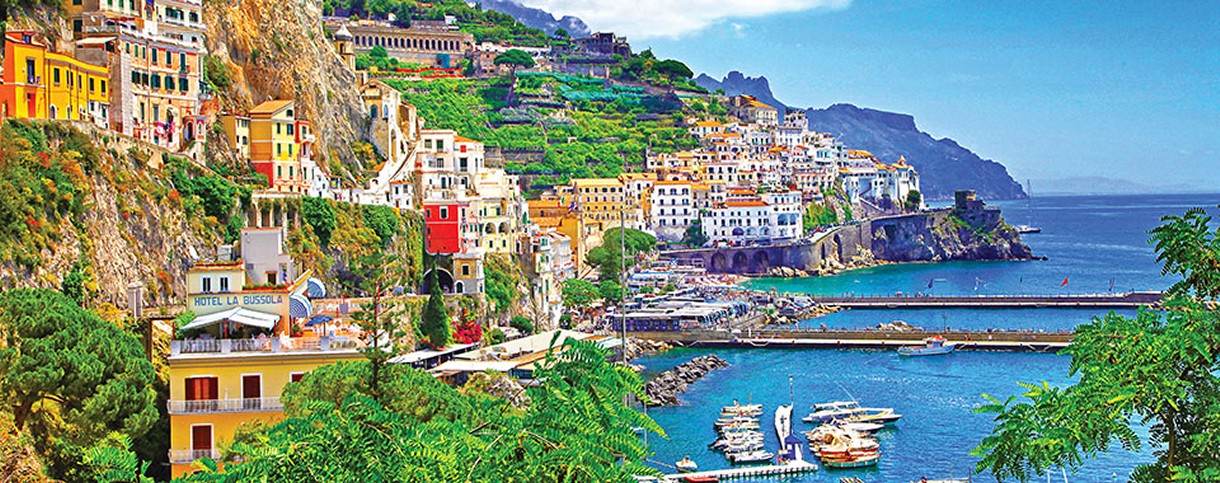
 |
Marla's Note:
The Amalfi Coast
is a renowned stretch of mountainous coastline
south of Naples, located in an area of Italy known as Campania.
One of Europe's most desirable and romantic destinations,
the Amalfi Coast has been seducing visitors
with its beauty since antiquity.
|
There is a
roadway covering a 25 miles stretch that connects the
hilltop village of Meta, just outside Sorrento, with Vietri
sul Mare in the east. Undoubtedly our bus will take us
on a breath-taking tour.
The southern end
of the Bay of Naples stretches out in a steep and rocky
peninsula that reaches towards the Isle of Capria and
Sorrento, another major tourist destination, looks back
towards Naples from the north coast of the peninsula.
The southern
side of the peninsula is dotted with picturesque villages
and towns clinging giddily to cliffs; this is what is known
as the Amalfi Coast.
Today, this "road of 1,000 bends" hugs soaring cliffs and
weaves tortuously in and out of deep gorges, passing olive
groves, lemon terraces and tumbling whitewashed villages,
all against a background of a shimmering azure sea.
It is barely
wide enough for two lanes of traffic, and is best avoided by
visiting off-season in September when the evenings are
balmy, the water is still warm and the crowds have all but
disappeared.
For decades these fishing villages, stacked precariously
above the sea, have been one of Italy's major tourist
attractions. Nowadays the area's principal industry is
tourism, and a staggering number of hotels have been
squeezed into the restricted spaces of the small towns.
Well-accustomed
to catering for affluent foreign tourists, the area offers a
generous selection of restaurants, bars, boutiques, boat
trips. Little boutiques and ceramics shops are a part of the
coastline's charm.
The views are
undeniably breathtaking, and away from the main road and the
tourist hot-spots you can still discover the peace that
charmed earlier visitors.
|
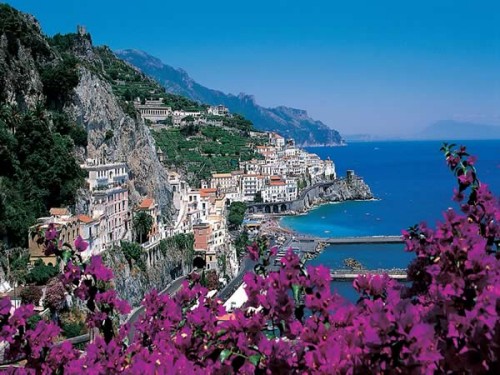
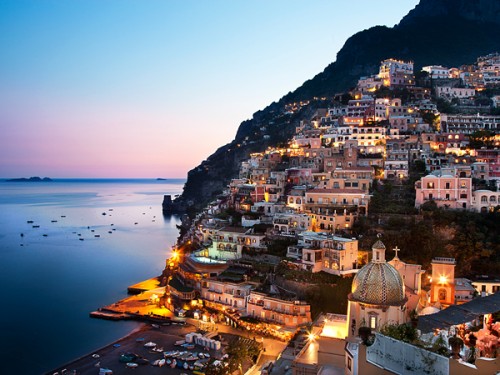 |
 |
Marla's Note:
Catania is a wonderful combination of ancient
and modern.
Her
history and character is inextricably linked to the
formidable form of Mount Etna, which looms over the
city as an ever-present menace.
Given
what Vesuvius once did, people notice every Etna
rumble to heart.
|
At the foot of
this great volcano, facing the Ionian Sea lies Catania, a
Sicilian monument to survival and resilience, defying the
ravages of time and nature. Etna has an interesting
character, and despite its imposing appearance and
destructive potential, is known to many as the "good
volcano".
According to historic accounts, it is more likely to damage
places than people, as its lava flows tend to be slow,
giving town inhabitants time to flee its fury. The main
casualties are immovable. Homes and monuments risk damage or
annihilation like Castle Ursino, a large proportion of which
was buried beneath the flow of slow moving but nonetheless
deadly floating lava.
Plucky Catania, despite having been rebuilt seven times due
to earthquakes and volcanic damage, is rich in folklore,
history and beauty. The obvious hazard of living at the foot
of a live volcano has some recompense, as the countryside
surrounding Etna is fertile and over the centuries has been
coveted and conquered.
If Etna has been the cause of Catania's destruction, it has
also been a vital source of the construction of the city, as
much of the black volcanic rock which characterises
Catania's beautiful Baroque architecture was spewed from the
heart of Etna. The way in which these past eruptions have
formed the land, gives rise to the origins of the city's
name. The historian Plutarch suggested that it came from the
word Katane meaning "grated", referring to the uneven
surface of the land surrounding Etna, upon which Catania
stands.
In the VIII century B.C, Catania was a Greek colony, subject
to the Siracusans and later the Romans. The following
Byzantine, Arab and Norman epochs each contributed to its
characteristics and culture. Though occupied and invaded
over the centuries with the rest of Sicily, Catania has a
reputation for being a resilient city, tough on unwanted
invaders.
Fun things to do:
The Cathedral - Dedicated to the city's Patron,
Santa Agata and reconstructed with the use of material
recovered from the buildings of the Roman era.
The Piazza Duomo - Surrounded by the Palazzo
Senatoria and elegant noble buildings arranged around the
Fontana dell'Elefante, the symbol of the city.
The Collegiata - A magnificent example of the architectonic
splendor built during the 18th century, with the interior
decorated by Giuseppe Sciuti.
The Noto Valley - Reconstructed following the destructive
aftermath of the 17th century earthquake, the Noto Valley is
a World Heritage Site due to its stylistic features.
Scuba dive in the ocean beds between the land the the
stacks. Hike the narrow trails that run along the high rock
walls at the Gole di Alcantara. Discover excellent
birdwatching spots including the Simeto Delta
The cuisine of Catania is one of the tastiest in Sicily,
where the most typical feature regards the roasts, and the
well-known "oranges" made of crunch rice balls stuffed in
the middle. Also, one cannot ignore traditional fish dishes
that range from sea salads, shells seasoned with a
sprinkling of lemon to fish fries of newborn mullets,
accompanied by onions. With such pastries as the Sicilian
cassata, martorana fruit based on almond paste, monaca
buscuits, nougat torroncini and Santa Agata raisins; you'll
find yourself instantly hooked.
Taormina, Sicily
Take a tour to the
well-known resort community of Taormina renowned for
its beautiful setting. It is perched on a mountainside on
the West Coast of Sicily.
Taormina is one of the
prettiest spots in Sicily 32 miles (45 minutes) north of
Catatania.
Stop below the village of Taormina before proceeding
uphill to the village gates. Upon reaching Taormina, you'll
walk past the ancient village's many squares and see the
small boutiques located along the Corso Umberto. Here you
will find the "essence of Sicily," Taormina. Built in the
3rd century BC, the city was later almost completely
renovated by the Romans. Taormina is perched on a terrace
overlooking the sea. It’s medieval character will delight
you. Near the center of Taormina, you will find cobblestone
streets to Palazzo CORVAIA, a 15th century building adorned
with classic double windows. Proceed to the impressive Greek
Theater, built in the 3rd century BC. Renowned for its width
and for its unique acoustic qualities, it is still used for
open-air concerts. Weather permitting; you will have an
impressive view of Mt. Etna.
Enjoy the
busy main street with its numerous shops and cafes and to
savor the charm and atmosphere of this small medieval town
with its palaces, squares, staircases and small side alleys.
Idyllically perched on a rocky promontory high above the
sea, Taormina has been the most popular tourist destination
in Sicily for a couple of hundred of years, ever since it
became an integral part of the Grand Tour. Beautifully
restored mediaeval buildings, breathtaking views around
every corner and a giddy network of winding streets strewn
with shops, bars and restaurants make for a perfect holiday
spot.
Today, Taormina lives on tourism. Visitors flock from all
over the world to see its Greek-Roman theatre, to amble
along its perfectly preserved Mediaeval streets, to admire
its dramatic views of Mount Etna and to immerse themselves
in the archetypal Mediterranean atmosphere.
The main attraction is, without doubt, the theater. Now home
to all manner of events, including plays, fashion shows,
concerts, and cinema festivals, the Teatro Greco, as its
name suggests, started its life in the 3rd Century BC
hosting performances of works by Aeschylus, Sophocles,
Euripides and Aristophanes.
Originally quite small, it was
enlarged by the Romans to accommodate their own particular
brand of theatrical extravaganza. The views from the theater
are spectacular, taking in a (usually) smoking Mount Etna
and the Bay of Naxos down below.
Taormina is served by its very own cable car which ferries
tourists to and from the seaside resorts down along the
coast. Extensive beaches, rocky coves, tiny islands (such as
the famous Isola Bella) and sea stacks abound, making this
enchanting coastline a firm favorite with Sicilians and
visitors alike.
|
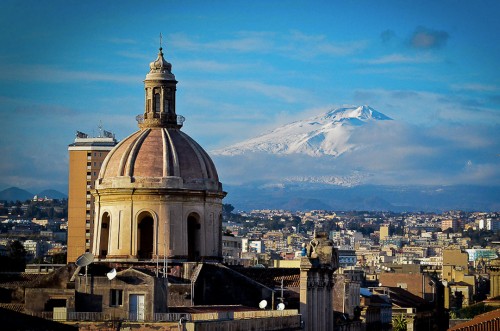
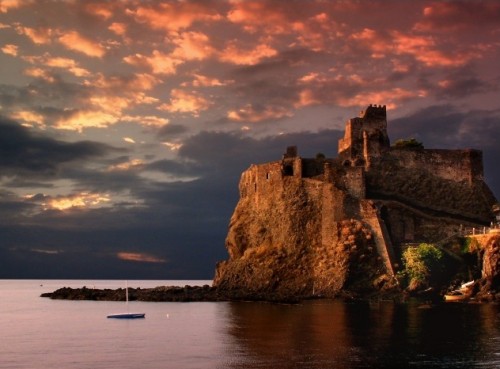
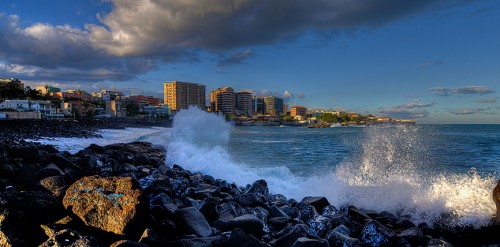
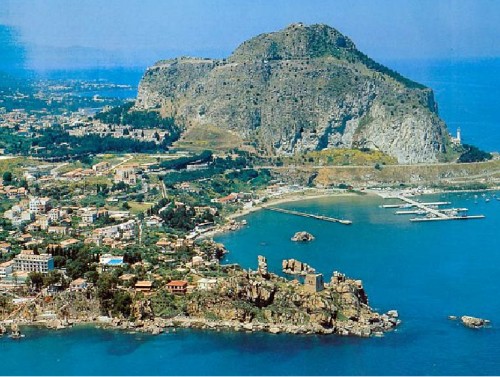
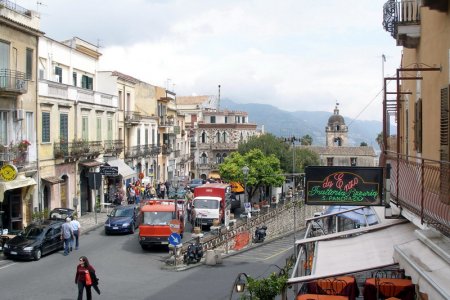
Taormina
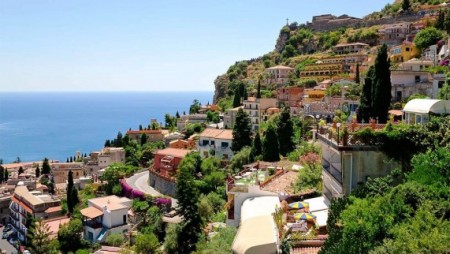
Taormina
|
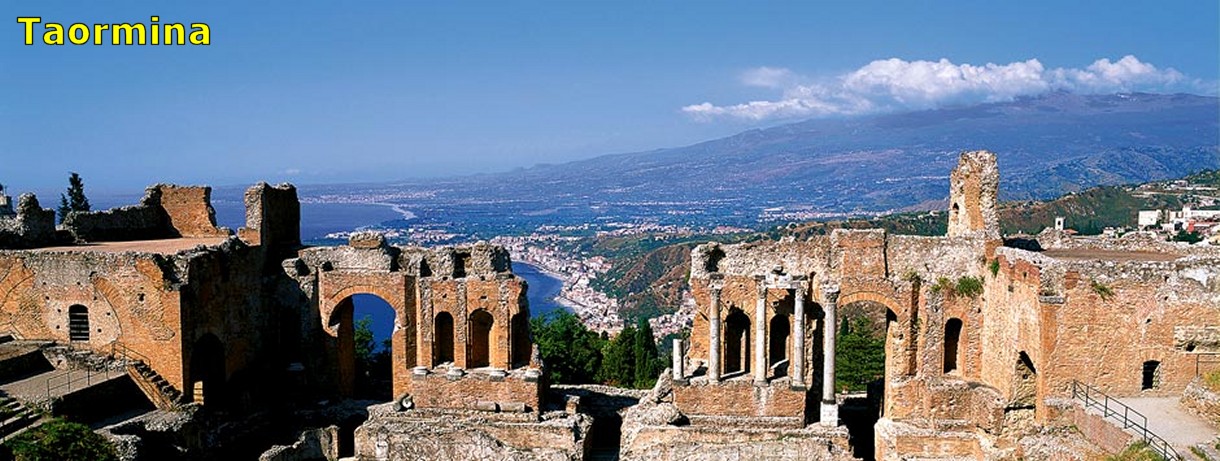 |
 |
Marla's Note:
While
Greece stands as the birthplace of the Western
Civilization, it can also be said that Athens is the
cradle of democracy.
Athens
is a vast city. When you climb to the top of
the Acropolis, a major hill in the center of the
city, you can see this city extending as far as the
eye can see in every direction.
|
Athens is
situated in the prefecture of Attica and extends to the
peninsula that reaches up to Central Greece. Mountains to
the north and east, and the Sardonic Gulf to the south and
west surround Athens. The sun shines over Athens all year
round. The climate is one of the best in Europe. It is
located just a few miles from the port of Piraeus, the
central commercial port of the capital, and the shores of
southern Attica. Piraeus is the main port of Athens, the
biggest in Greece, and one of the most important in the
Mediterranean Sea.
Piraeus is
walking distance from Kastella, a hill strewn with beautiful
houses that offers a majestic view of the Saronic Gulf.
Athens has constantly been inhabited since Neolithic Age.
The 5th century was the time of its ultimate bloom, when
moral values and civilization surpassed city limits and
became the motherland of western civilization. In the
centuries that followed, many conquerors tried to take over
Athens. In 1834 Athens was chosen to be the capital of the
newly established Greek State. The city that now hosts more
than 4,5 million people was constructed around the Acropolis
walls. Today it is the political, social, cultural,
financial and commercial center of Greece.
Athens is a city of different aspects. Take a walk around
the famous historic triangle (Plaka, Thission, Psyri). This
old neighborhood reveals the coexistence of different eras.
You will find old mansions, some are well preserved and
others are worn down by time. There are also luxurious
department stores, small intimate shops, fancy restaurants
and traditional taverns. Traditional handicrafts, though
sometimes expensive, are the most authentically Greek
souvenirs. In Athens, Monastiraki and Plaka are the best
places to purchase handcrafted goods. Experience the
traditional flea market. You'll find ceramics, brightly
colored embroidery and wall hangings, flokati rugs and
tapestries.
The heart of Athens beats in Syntagma Square. This is where
Parliament and most of the Ministries are. A few miles from
the historic center, you can enjoy the sea breeze. Or you
can head up north and enjoy the fresh air at the more classy
neighborhoods of Marousi, Melissia, Vrilissia and of course
Kifisia.
Athens and Attica in general have the most important
archaeological monuments (Acropolis, Odeion of Herodes
Atticus, Olymbion, Roman Market, Panathinaiko Stadium and
The Temple of Poseidon.) The capital has many imposing
neoclassic buildings, The Greek Parliament and Athens
Academy and University. Don't miss visiting the museums
hosting unique treasures of Greece’s cultural inheritance.
Take a visit to The National Archaeological museum . It
ranks among the top ten museums in the world. By far the
most important museum in Greece, this collection contains
artistic highlights from every period of ancient Greek
civilization, from Neolithic to Roman times. It houses some
of the most important artifacts from a variety of
archaeological locations around Greece.
The exhibitions
can be traced to the development of the Art of Greece from
the prehistoric days to the golden age of Greek thought, and
all the way to the Roman times.
Holdings are
grouped in five major collections: prehistoric artifacts
(7th millennium BC to 1050 BC), sculptures, bronzes, vases
and minor arts, and Egyptian artifacts. The museum's most
celebrated display is the Mycenaean Antiquities. Here are
the stunning gold treasures from Heinrich Schliemann's 1876
excavations of Mycenae's royal tombs: the funeral mask of a
bearded king, once thought to be the image of Agamemnon but
now believed to be much older, from about the 15th century
BC; a splendid silver bull's-head libation cup; and the
15th-century BC Vaphio Goblets, masterworks in embossed
gold. Mycenaeans were famed for their carving in miniature.
Other stars of the museum include the works of Geometric and
Archaic art (10th-6th centuries BC), and kouroi and funerary
stelae (8th-5th centuries BC), among them the stelae of the
warrior Aristion signed by Aristokles, and the unusual
Running Hoplite (a hoplite was a Greek infantry soldier).
The collection
of Classical art (5th-3rd centuries BC) contains some of the
most renowned surviving ancient statues: the bareback Jockey
of Artemision, a 2nd-century BC Hellenistic bronze salvaged
from the sea; from the same excavation, the bronze
Artemision Poseidon (some say Zeus), poised and ready to
fling a trident (or thunderbolt?); and the Varvakios Athena,
a half-size marble version of the gigantic gold-and-ivory
cult statue that Pheidias erected in the Parthenon.
The Parthenon
and the Acropolis can get confused because they are in the
same spot. The Acropolis is the name for the imposing
hill that dominates the cityscape of Athens. The
Parthenon is the name for the famous temple that rests atop
the Acropolis hill.
No visit to
Athens would be complete without a visit to the Acropolis.
There you'll find the Parthenon, the largest building in the
Acropolis and one of the world's most awe-inspiring sights.
It was built as a temple to Athena and is still a remarkable
structure today.
The Acropolis has been nominated to be one of the 7 wonders
of modern world. In fact this trademark of Athens is one of
the favorites. The Holy Rock of Acropolis dates back to the
5th BC, the famous Golden Age of Periklis. Acropolis in
Greek literally means “the highest point of the town”.
The Acropolis hill, so called the "Sacred Rock" of Athens,
is the most important site of the city and constitutes one
of the most recognizable monuments of the world. It is the
most significant reference point of ancient Greek culture,
as well as the symbol of the city of Athens itself as it
represents the apogee of artistic development in the 5th
century BC.
The Acropolis rock is part of a Late Cretaceous limestone
ridge that cuts through the Attica plateau in the northeast
to the southwest axis and includes the Likavitos hill, the
Philopappos (Museum) hill, the hill of the Nymphs, and the
Pnyx. The rock rises from the basin about 70 meters and
levels to a flat top 300 meters long by 150 meters wide. Its
flat top is due to the numerous landfills that have
accommodated construction of fortifications and temples
since the Mycenaean era.
With its many
shallow caves, the abundant percolating water springs and
steep slopes, the Acropolis was a prime location for
habitation and worship location for Neolithic man. The
Propylaea are the monumental entrances to the sacred area
dedicated to Athena, the patron goddess of the city. Built
by the architect Mnesicles with Pentelic marble, their
design was avant-garde. To the south-west of the Propylaea,
on a rampart protecting the main entrance to the Acropolis,
is the Ionian temple of Apteros Nike, which is now being
restored.
The first habitation remains on the Acropolis date from the
Neolithic period. Over the centuries, the rocky hill was
continuously used either as a cult place or as a residential
area or both. The inscriptions on the numerous and precious
offerings to the sanctuary of Athena (marble korai, bronze
and clay statuettes and vases) indicate that the cult of the
city's patron goddess was established as early as the
Archaic period (650-480 B.C.).
The Parthenon is the most famous surviving building of
Ancient Greece and one of the most famous buildings in the
world. The Parthenon has stood atop the Acropolis of Athens
for nearly 2,500 years and was built to give thanks to
Athena, the city's patron goddess, for the salvation of
Athens and Greece in the Persian Wars. The building was
officially called the Temple of Athena the Virgin;
"Parthenon" comes from the Greek word parthenos, "virgin."
Throughout its long life, the Parthenon has functioned most
importantly as a Greek temple, but has also been a treasury,
a fortress, a church, and a mosque. Today, it is one of the
most recognizable icons and popular tourist attractions in
the world.
Athens has always attracted peoples' attention, most notably
for being the birthplace of the Olympic Games.
It was the Panathenaic Stadium, which hosted the 1st Olympic
Games of the modern era, in 1896. However, its history goes
way before the 19th century AD. The site of the Panathenaic
Stadium was originally a small natural valley, between the
two hills of Agra and Ardettos, over Ilissos river. It was
transformed into a stadium by Lykourgos in 330-329 BC for
the athletic competitions of "Panathinea", the greatest
festivities in ancient Athens.
Between 140 and 144 AD, Herodes Atticus restored the
Stadium, giving it the form that was found at the 1870
excavation: the horseshoe construction with a track 204.07
meters long and 33.35 meters wide. It is believed that the
Stadium had a seating capacity of 50,000 people.
The modern times restoration of the Stadium was conducted at
the end of the 19th century, for the first Olympic Games
that were reborn in 1896. The Stadium was rebuilt with
marble from Mt Penteli, the same kind that was used 2,400
years before, for the construction of the Parthenon on the
Acropolis. It could now hold over 60,000 spectators. The
total cost was 1 million GrD, a huge amount of money in
those days.
A visit to the Stadium is an absolute "must" when in Athens.
It is located in the centre of the city, on Vassileos
Konstantinou Avenue, on the east side of the National
Gardens.
|
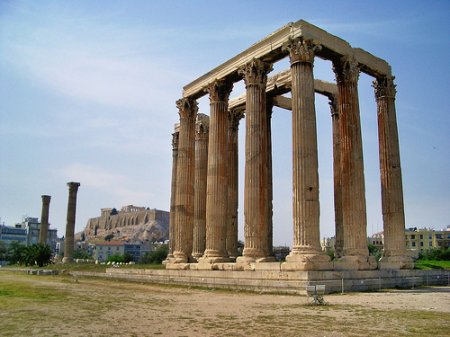
Temple of Zeus
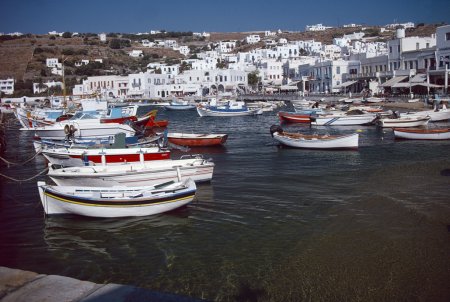
Greek
fishing village
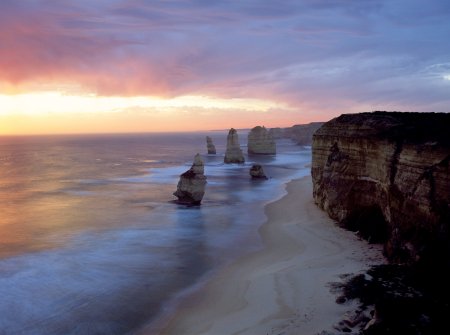
Greek
coastline
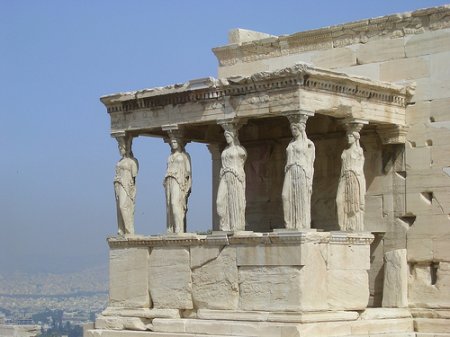
Acropolis close-up
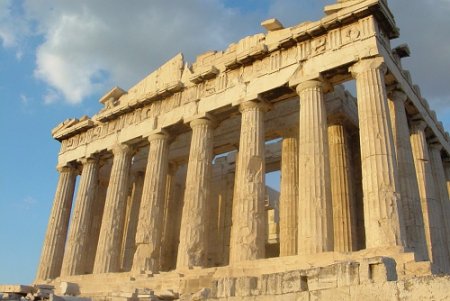
Parthenon
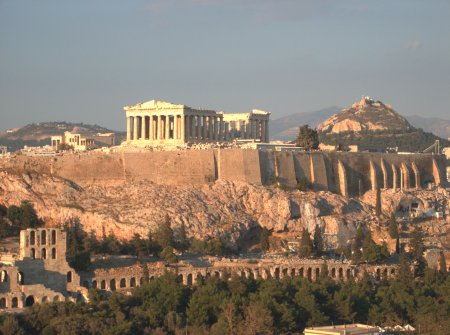
Acropolis in the daytime
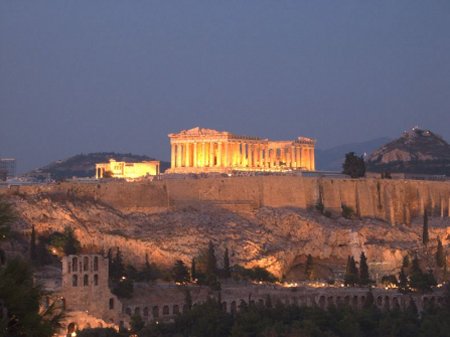
Acropolis at night
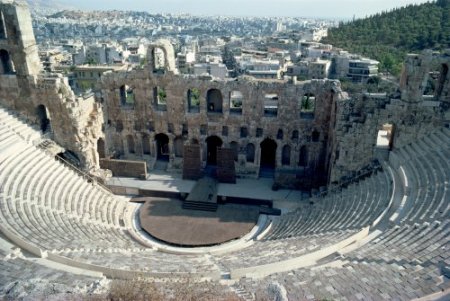
Temple
of Dionysus
|

 |
Marla's Note:
Black-sand beaches, crystal-clear waters and
whitewashed villages carved into volcanic cliffs
make the island of Santorini a wonder
to behold.
Visitors
far and wide come to revel in the mountaintop
atmosphere while they enjoy the scenic waters of the
Mediterranean below.
|
Santorini is
considered to be the most sought-after place for a romantic
getaway in Greece, since there are not many places in the
world where you can enjoy exquisitely clear waters while
perched on the rim of a massive active volcano in the middle
of the sea!
For those who
are in more of an exploratory bent, Plato once wrote about
the existence of Atlantis in the middle of the Aegean Sea.
With that in mind, Jacques Cousteau looked for the lost city
of Atlantis here. Indeed many visitors come to
Santorini to investigate the mysteries of the lost kingdom
of Atlantis.
Are you a fan of
the color blue? Come to Santorini. Due to the
rich color of the surrounding sea, the Greeks have painted
many rooftops a matching blue. Indeed, royal blue is
the color of the national flag of Greece.
Crescent-shaped
Santorini , the precious gem of the Aegean, is actually a
group of islands in the southernmost part of Cyclades.
The whole complex of Santorini islands is still an active
volcano. It is probably the only volcano in the world
whose crater is in the sea.
The islands that
form Santorini came into existence as a result of intensive
volcanic activity; twelve huge eruptions occurred, one every
20,000 years approximately, and each violent eruption caused
the collapse of the volcano central part creating a large
crater (caldera). The volcano, however, managed to recreate
itself over and over again.
The last big
eruption occurred 3,600 years ago (during the Minoan Age),
when igneous material (mainly ash, pumice and lava stones)
covered the three islands (Thíra, Thirassiá and Asproníssi).
The eruption destroyed the thriving local prehistoric
civilization, evidence of which was found during the
excavations of a settlement at Akrotíri.
The solid
material and gases emerging from the volcano's interior
created a huge "vacuum" underneath, causing the collapse of
the central part and the creation of an enormous "pot"
-today's Caldera- with a size of 8x4 km and a depth of up to
400m below sea level.
The eruption of
the submarine volcano Kolúmbo, located 6.5 km. NE of
Santorini, on 27th September 1650, was actually the largest
recorded in Eastern Mediterranean during the past
millennium! The most recent volcanic activity on the island
occurred in 1950. The whole island is actually a huge
natural geological/volcanological museum where you can
observe a wide range of geological structures and forms!
Santorini's
spectacular caldera is a vestige of what was probably the
biggest volcanic eruption in recorded history, believed by
some to have caused the disappearance of Atlantis. The
island's violent volcanic history is visible everywhere you
look - in black-sand beaches, earthquake-damaged dwellings
and raw cliffs of lava plunging into the sea.
Firá is the
picturesque capital of the island; perched high up on the
edge of the Caldera, it looks like a marvelous painting.
Firá, together with Oia, Imerovígli and Firostefáni located
high above on a cliff, make up the so-called "Caldera's
eyebrow", the balcony of Santorini, which offers an amazing
view of the volcano. Some of the villages are cosmopolitan
some more peaceful; they are surrounded by vast vineyards;
whitewashed cliff-top towns with castles affording amazing
views out over the Aegean. Soaking up the villages'
distinctive traditional atmosphere is a very rewarding
experience.
Fun things to do:
Volcanic eruptions have created beaches here unlike any
you'll see back home. The Red Sand Beach is one of the
most beautiful sites to see. Bring your camera or simply
experience and admire this stunning natural phenomenon.
Stop at a Santorini wine producer to enjoy a glass and
explore the important role wine has served in the island's
growth.
Stroll through the scenic village Oia, a haven for artists
and artisans, and explore their shops, enjoy a drink or a
traditional dinner while watching the sun sink into the
caldera.
A visit to Santorini is the ultimate gastronomic experience,
as the island is a true culinary paradise! Treat your taste
buds to some famous traditional products like cherry
tomatoes, white egg plants, fava, caper and "hloró tyrí", a
special kind of fresh goat cheese found on the island, or
why not try some of the exceptional wines produced from
grapes grown in the volcanic soil of the island!
Assyrtiko,
Athyri, Aidani, Mantilaria and Mavrotragano are just some of
the distinctive varieties that you can taste at the island's
famous wineries (some of them operate as a museum as well)
or at restaurants.
Popular main
dishes include mousakas (eggplant baked with minced meat and
béchamel sauce), stuffed tomatoes and freshly grilled
seafood. The mainstay of the Greek diet is the ubiquitous
horiatiki salata (country salad), consisting of cucumber,
tomatoes, onions, feta cheese and olives.
Venture into Santorini seaside treasures and enjoy deep blue
waters and beaches with white, red or black sand or volcanic
pebbles, spectacular rock formations and impressive lunar
landscapes.
|
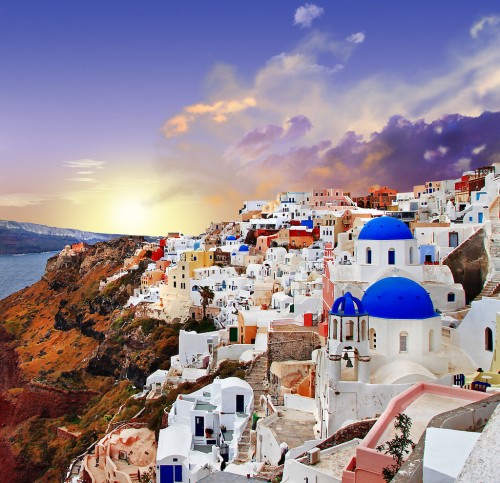
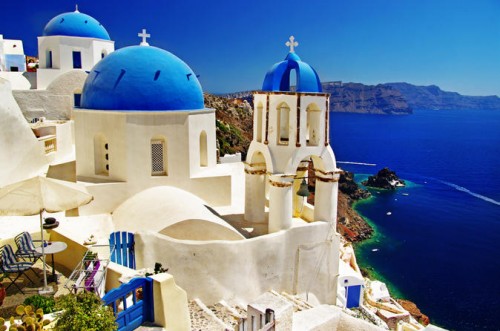
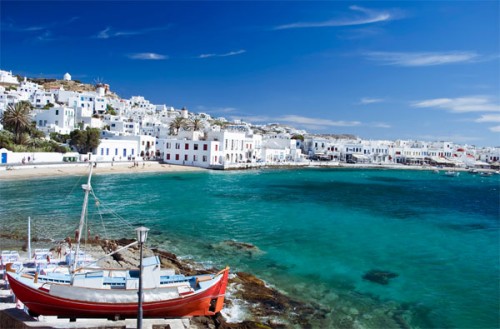
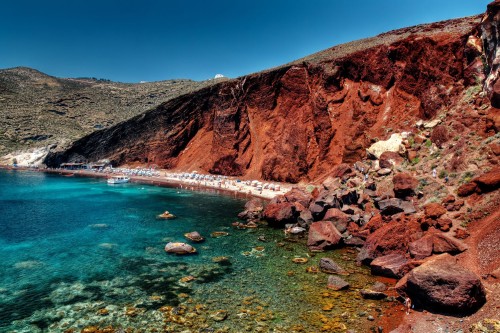
Red Sand Beach
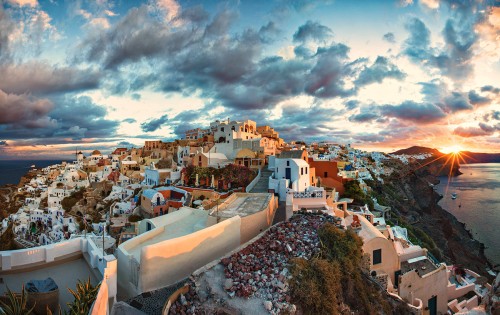
Santorini at sunset |
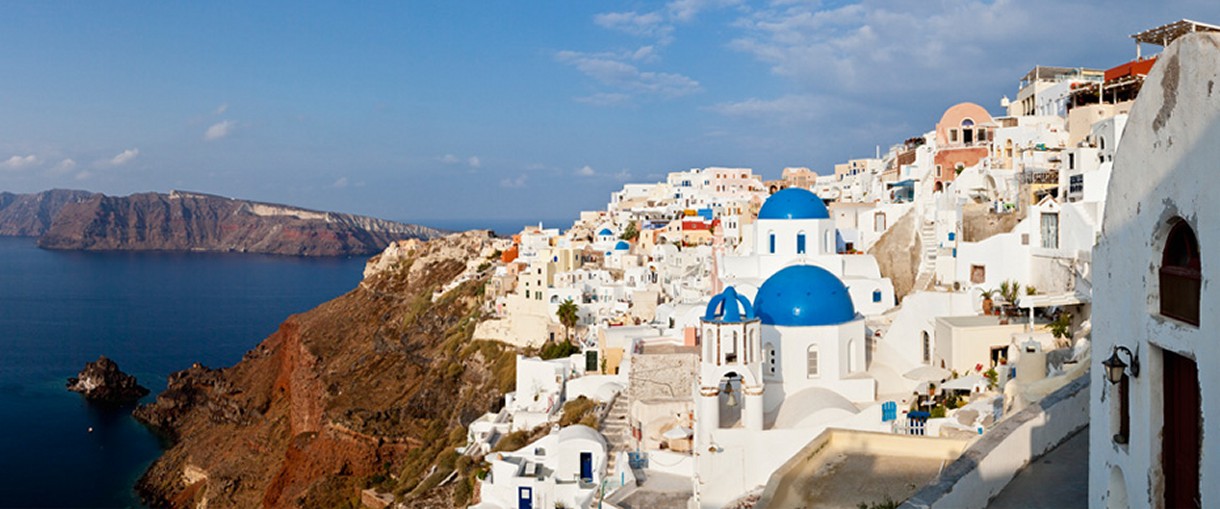
 |
Marla's Note:
Mykonos is known as the "Party
Island" of Greece.
As this
is among the most popular tourist destinations in
Greece, most Mykonos beaches are organized with many
tourist facilities, from seaside accommodation to
restaurants, beach bars, and water sports centers.
|
The beaches are
famous all over the world for their golden sand and the
crystal waters. The best organized beaches in Mykonos are
found on the southern coast, which get extremely overcrowded
during peak season. Paradise Beach and Super Paradise Beach
are famous as the best party beaches in Greece.
In the
deep blue waters of the Mediterranean lies one of the most
inviting places in all of Greece - Mykonos. Its countless
bays and beaches and its quaint cobblestone streets are
bound to welcome any visitor. According to Greek
mythology, it was here that Hercules slew the Giants; the
large rocks that are scattered about the island are said to
be their petrified corpses. True or not, you'll have to
judge for yourself. Either way, the Island of Mykonos should
not be missed.
Mykonos is famed as a cosmopolitan destination amidst the
Greek islands and widely recognized as one of the great
travel meccas. It is one of the most visited islands in the
Aegean.
This island is famous for the vivid nightlife and the
gorgeous beaches. Geographically located on the northern
side of the Cyclades, almost in the centre of the Aegean
Sea.
Mykonos'
nickname is The island of the winds.
Mykonos has two villages, Chora and Ano Mera. Chora is the
most popular spot on the island and the center of all
activities in summer. It stands out for its picturesque
architecture and the tourist facilities. Ano Mera is,
however, a small and quiet village that doesn't get that
frequented as Chora.
Mykonos' main communities are Chora, the island's port town
and capital, and Ano Mera.
Mykonos Town (Chora) is a stunningly picturesque Cycladic
town with a maze of tiny streets and whitewashed steps
lanes, houses and churches, gathered around its harbour in
the middle of a wide bay. It is one of the most cosmopolitan
and crowded towns of the Aegean. Although the streets are
lined with little shops, boutiques, art galleries, cafes,
stylish bars and restaurants, Mykonos Town has not
completely lost its identity.
Despite the
island's rapid growth and development, it's traditional
Cycladic architectural style and character has remained
firmly intact, thanks to the island's strict building
regulations. Expect to find shops by Chanel, Burberry, Louis
Vuitton and other well known, high-end brands. It would
appear that these shops cater more for the tourists that
arrive on many of cruise ships that dock nearby.
Ano Mera is a small village on the middle of the island, and
the only inland settlement on the whole of Mykonos, about 7
km east of Mykonos Town. Ano Mera is based around a large
central square, which is lined on three sides by a series of
Greek tavernas. The monastery of Panagia Tourliani, founded
in 1542, is Ano Mera's most significant highlight.
Other fun things to do:
Take a tour boat over to Delos Island to visit the
birthplace of Apollo on this historic island. Dating back to
the third millennium B.C., Delos is one of the most
significant archaeological sites in the world. Marvel at the
ancient ruins from famed architectural sights.
Visit the Archaeological Museum on Mykonos, featuring
important finds from the ruins on neighboring Delos.
Spend an enchanting afternoon exploring the charming
cobblestone streets and two-story, whitewashed shops and
homes of these beautiful islands.
|
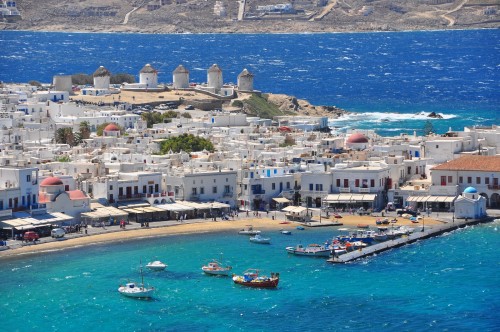
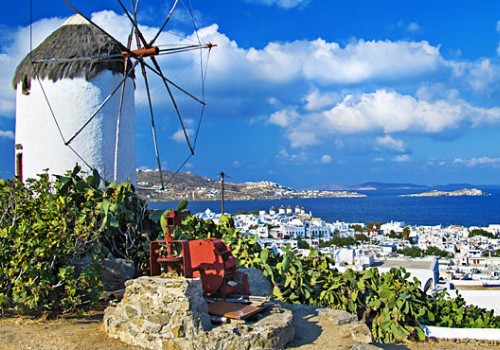
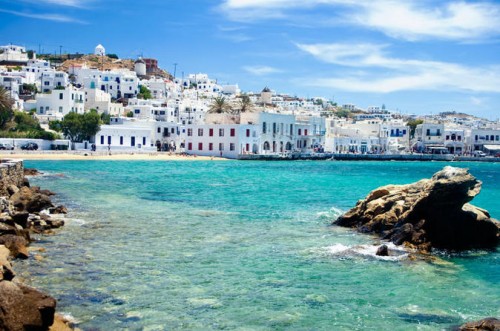
 |

 |
Marla's Note:
For the
final leg of our journey, Kotor begins
a highly dramatic change of scenery. From the
sun-kissed beaches of the Aegea Sea, now we visit
the moody Balkan cliffs overlooking the Adriatic Sea
As the
Balkan area emerges from the horrors of warfare in
the Nineties, the cruise industry has recently
opened this striking area to the world at large.
|
Kotor is a
coastal town in Montenegro. It is located in a secluded part
of the Gulf of Kotor. The city is very small with a
population of 13,000.
The old Mediterranean port of Kotor is surrounded by
fortifications built during the Venetian period. Kotor is
recessed into the mountains due to a fjord-like river.
As one can see, the surrounding area form an impressive,
picturesque Mediterranean landscape.
In recent years, Kotor has seen a steady increase in
tourists, many of them coming by cruise ship. Visitors are
attracted both by the natural beauty of the Gulf of Kotor
and by the old town of Kotor.
The coastal town
is located in a most secluded part of the Gulf of Kotor, at
the foot of mountain Lovcen. Kotor is a typical
Mediterranean travel destination with old narrow streets,
romantic bars and restaurants, small shops, antique
monuments, churches and picturesque buildings. Famous poets
and writers have used the beauty of the Bay of Kotor as
inspiration for their works. Listed as UNESCO World Natural
and Historical Heritage Site, Kotor has become a famous
yachting and sailing destination for skippers around the
globe.
A person's first look at Kotor, whether from the sea or from
the road, always leaves a strong impression. Kotor is unique
for several reasons. It is located on the only natural fjord
of its kind in the world and in a bay that has made the list
of Most Beautiful Bays in the World. But visiting Kotor is
about more than beautiful views-it's also about experiencing
the cultural heritage of Boka Kotorska Bay.
The Old City of Kotor - Kotor Stari Grad - is one of the
best preserved medieval towns in the Adriatic. The Old City
is surrounded by an impressive city wall, known as bulwarks,
which was built by the Republic of Venice and still retains
much of Venetian architectural influence. Explore a great
number of monuments of medieval architecture: churches,
cathedrals, palaces and museums.
While there is no accurate information regarding the
founding of Kotor, archaeologists believe that it rose on
the foundations of the ancient city of Acruvium. Legend has
it that Alkima, a fairy, advised the Serbian king, Stefan
Dusan, not to build his town in the hills "where boats don't
have a harbor and where horses run about", but to instead
build near the sea. In Phoenician myth, the town was founded
after Argonauts' conquest for the Golden Fleece.
Whichever story might be correct, it is believed that the
roots of Kotor stretch back before Homer (10-12 BCE), a time
when Phoenicians ruled the Mediterranean. This means that
Kotor is an ancient city, as old as the sea trade in the
Adriatic.
There are three entrances to the Old Town, including the Sea
Gate of 1555 which serves as the main door. Huddled
underneath the rocks of Mt Loven, bordered from the north by
a short but violent river Kurda and to the west by an
underwater spring Gurdi. Kotor has all the features of a
Baroque town.
Kotor is unique because it is the only town on the eastern
coast of the Adriatic Sea to be located by name in historic
and strategic maps. Old Kotor was built like a maze for
protective purposes and it is very easy to get lost here. In
fact, even the locals get lost. Take on wrong turn and you
will wind up far from your destination.
This can happen
even with a town map in hand. However, looking for
landmarks, such as the 12th century St. Tryphon Cathedral,
will help-and these landmarks are listed on nearly every
tourist map. What can be more difficult is finding places
like the Maritime Museum, which is located inside the
Grgurina Palace, or finding public squares with funny names
such as the Lattice Square, Flour Square, Milk Square and
Cinema Square.
Inside the walls of the Old Kotor lies the largest number of
shops and boutiques. You'll also find smaller shops where
vendors offer footwear and clothes from renowned European
and world designers. Across the Kotor Riva and harbor is the
Kotor bazaar. Originally intended for the exchange of
various goods and merchandise, the market is mostly used to
sell fruits, vegetables and fish.
The cuisine in Kotor is mostly Mediterranean with menus
crammed with delectable fish specialties and cooks use a
variety of additives to enhance taste and smell. A
traditional Montenegro meal includes smoked ham, cheese
olives and famous red and white wines. For a taste of Kotor
specialties, try the domestic fish thick soup and satisfy
your sweet tooth with a frustula, a crunchy, dry sweet
cookie of rhombus shape. You won't find many restaurants,
open-air terraces or Kotor fiestas that do not offer these
scrumptious delicacies.
|
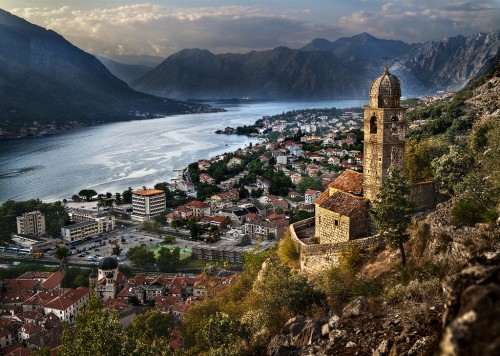
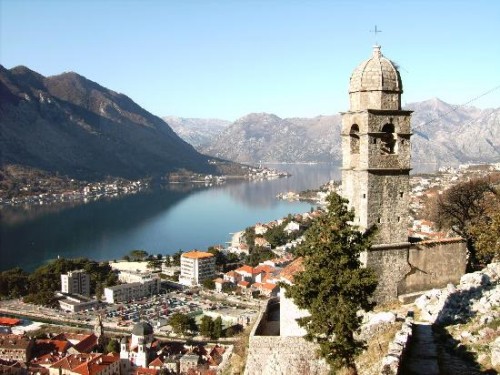
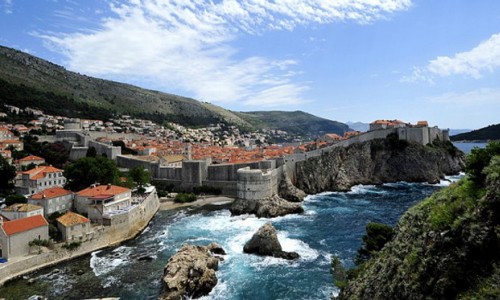
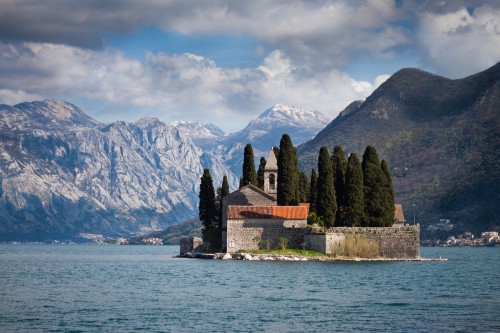
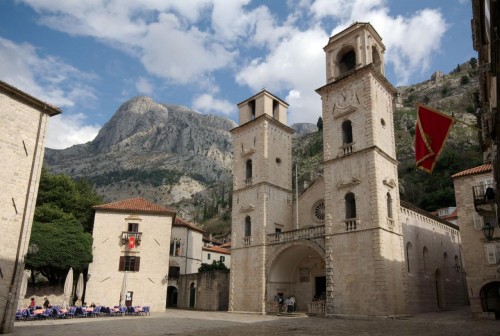 |
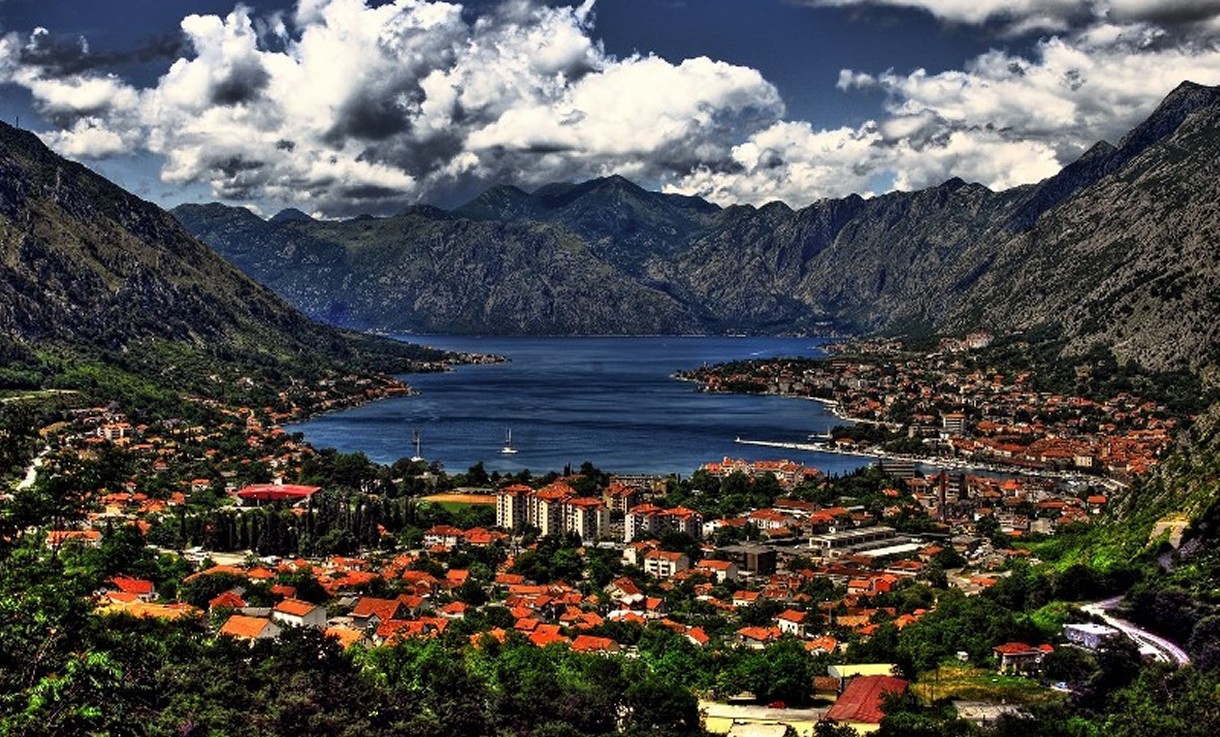
 |
Marla's Note:
Zadar has something of a sad history. It
seems the city has been conquered by one dynasty
after another over the centuries. Consequently
the city has never prospered because it was always
under someone's thumb.
Even
recently it was attacked during the Yugoslav Wars of
the Nineties. Today it enjoys its free
independence.
|
Zadar currently
has a population of 75,000. Situated on the Adriatic
Sea, Zadar's rich history dates from prehistoric times as a
Roman colony to present day. An intriguing city full of
character, it is the fifth largest city in Croatia boasting
a mixture of ancient ruins, Habsburg elegance, historical
sights and cosmopolitan cafes. Zadar is a unique location
with plenty for visitors to enjoy like the harmonic
spectacle of the Sea Organ and the majestic Roman ruins that
sprout randomly from the streets.
Visiting Zadar is like peeling back layers of time until you
end up in the 9th century BC in ancient Illyria. The Old
Town is paved with gleaming white stone and the straight
streets were first laid out by the Romans. A high wall
remains on the harbour side, built by the Venetians in the
16th century, and an entrance gate still sports the Venetian
lion.
Zadar was conquered by the Romans and became the colony of
Iadera. Later the Venetians moved in but the port city was
repeatedly attacked by the Turks. Venetian rule passed to
the Austrians in the 18th century and then to Italy until
1943 when the Germans moved in. Allied bombing destroyed
much of the historic centre which was rebuilt after the war
only to suffer more attacks by Yugoslav forces in 1991.
In the early
1990s the Yugoslav wars broke out. Zadar became a part of
the new Republic of Croatia. Its economy suffered greatly at
this time not only because of the war but also due to the
shadowy and controversial privatization process, which
caused most of its prosperous companies to go under.
During the Croatian War of Independence, Krajina rebels and
the Yugoslav People's Army under Slobodan Miloševic
converged on the city and subjected it to artillery
bombardment. Along with other Croatian towns in the area,
Zadar was shelled sporadically for several years, resulting
in damage to buildings and homes as well as UNESCO protected
sites. A number of nearby towns and villages were also
attacked, the most brutal being the Škabrnja massacre in
which 86 people were killed.
Land connections with Zagreb were severed for over a year.
The only link between the north and south of the country was
via the island of Pag. The siege of the city lasted from
1991 until January 1993 when Zadar and the surrounding area
came under the control of Croatian forces and the bridge
link with the rest of Croatia was reestablished in Operation
Maslenica. Attacks on the city continued until the end of
the war in 1995.
It's easy to appreciate Zadar sights because the historical
center is a compact pedestrian zone, perfect to explore on
foot while a walk around Zadar's walls gives a vivid sense
of Zadar's history.
Begin your tour of Zadar by admiring the defensive walls
that protect the city on three sides. They were built first
by the Venetians in the 16th century as a defense against
the Turks, then reinforced at the end of the 19th and
beginning of the 20th century. The oldest part of the walls
is on the eastern side where a footbridge connects the old
town with the newer parts. Opposite the footbridge there are
four medieval gates. Notice the 16th century Port Gate where
the Venetian lion, the symbol of Venice, still guards the
entrance.
Head back in the
opposite direction and you'll come to the Trg 5 Bunara
(Square of the 5 Wells) which once furnished Zadar with
water. Continuing on along the quay, you'll arrive at the
beautifully ornamented Town Gate with another Venetian lion
and various coats of arms.
Now take a walk
along the obala Kresimira IV, the western quay. The tree
lined waterfront promenade has wonderful picnic spots. It
was here that Alfred Hitchcock once remarked that Zadar's
sunsets were among the world's finest.
At the end of the Western Quay is Zadar's newest feature,
the Sea Organ. This unusual organ is powered by the wind and
the sea. When the sea pushes air through the whistles, a
series of melancholy chords are played, with the sound
emerging through the perforated stone stairs. You have to
hear it to believe it!
Next to the Sea Organ is the Sun Salutation also designed by
Nikola Basic. This circle of glass collects the sun's rays
by day, stores the energy, and emits it as a flickering
light show after dark. Extra energy is used to power the
lights along the waterfront.
Here are some other sights to see in Zadar:
Church of Saint Donat
This round pre-Romanesque church dates from around the 9th
century and has become a sort of symbol of Zadar. First
mentioned by Emperor Constantine in the 10th century, the
church was named after the bishop who allegedly instigated
its construction. With a round, central building and three
semi-circular apses, its features are most unusual. Now
unconsecrated, it's largely empty inside but the excellent
acoustics have made it Zadar's premier concert hall.
Roman Forum
Right in front of the Church of Saint Donat is the remains
of the Roman forum begun in the 1st century BC. Notice the
pillar on the north-western side called the "Pillar of
Shame". It's where evildoers were chained and humiliated in
the Middle Ages.
Museum of Church Art
Located in the Benedictine monastery just opposite Saint
Donat, this museum is devoted to all sorts of religious art
including reliquaries, paintings, sculpture and embroidery.
The collection is truly impressive.
Saint Anastasia's Cathedral (Katedrala Sv. Stosije)
It is the biggest cathedral in Dalmatia, dating mostly from
the 12th century and built on the site of an early Christian
church. The facade is adorned with rows of blind arcades
which stress the three-aisle structure. The large
rose-window is Romanesque and the smaller one above it is in
the Gothic style. The relics of St Anastasia lie in a marble
sarcophagus on the altar in the left apse. Bishop Donat
commissioned the repository in the 9th century.
Church of Saint Simeon (Crkva Sv. Sime)
The church was mentioned for the first time in 1190 but most
of it dates from the 16th and 17th centuries. The facade was
finished in 1632 and the bell tower dates from 1707. Inside
is the sarcophagus of St Simeon, a masterpiece of medieval
craftsmanship. The tomb was commissioned in 1377 and built
by a local goldsmith and his assistants. The coffin is made
from cedar and gilded inside and out with pure silver. The
scenes depict the legends and miracles of the saint.
Archaeological Museum
Most interesting is the model of Zadar under Roman rule but
the prehistoric pottery fragments and remnants of Illyrian
Zadar are also worthwhile.
An emerging culinary destination, Zadar is full of old and
new restaurants that mingle innovative and traditional
Mediterranean fares. Taste the Damatian diet with cuisine
from inland Croatia like fresh seafood and blitva, a mixture
of mangold and boiled potatoes.
Telascica
Nature Park
Telascica Nature Park is a two-hour ferry ride from Zadar.
|
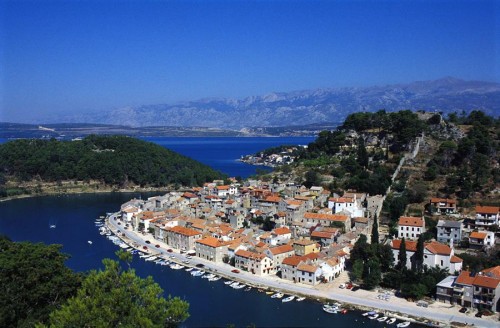
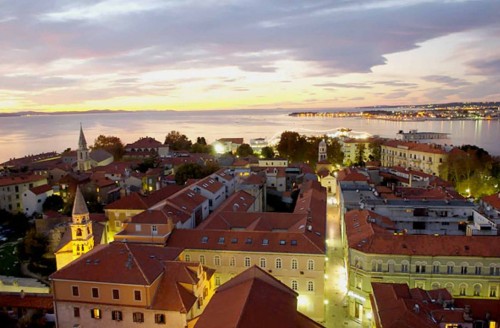

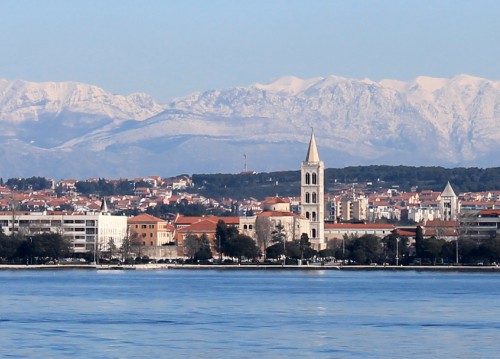
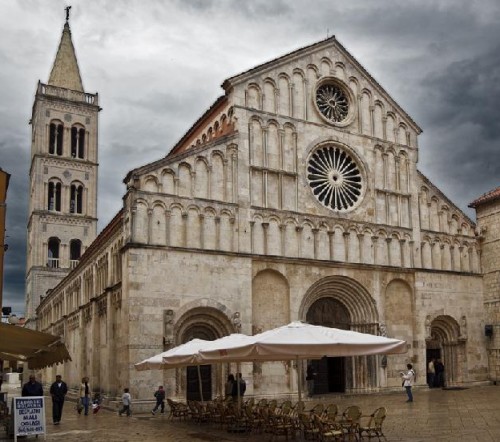

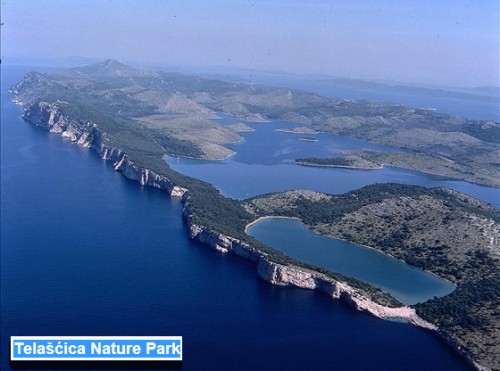 |
Plitvice National Park, Croatia
|
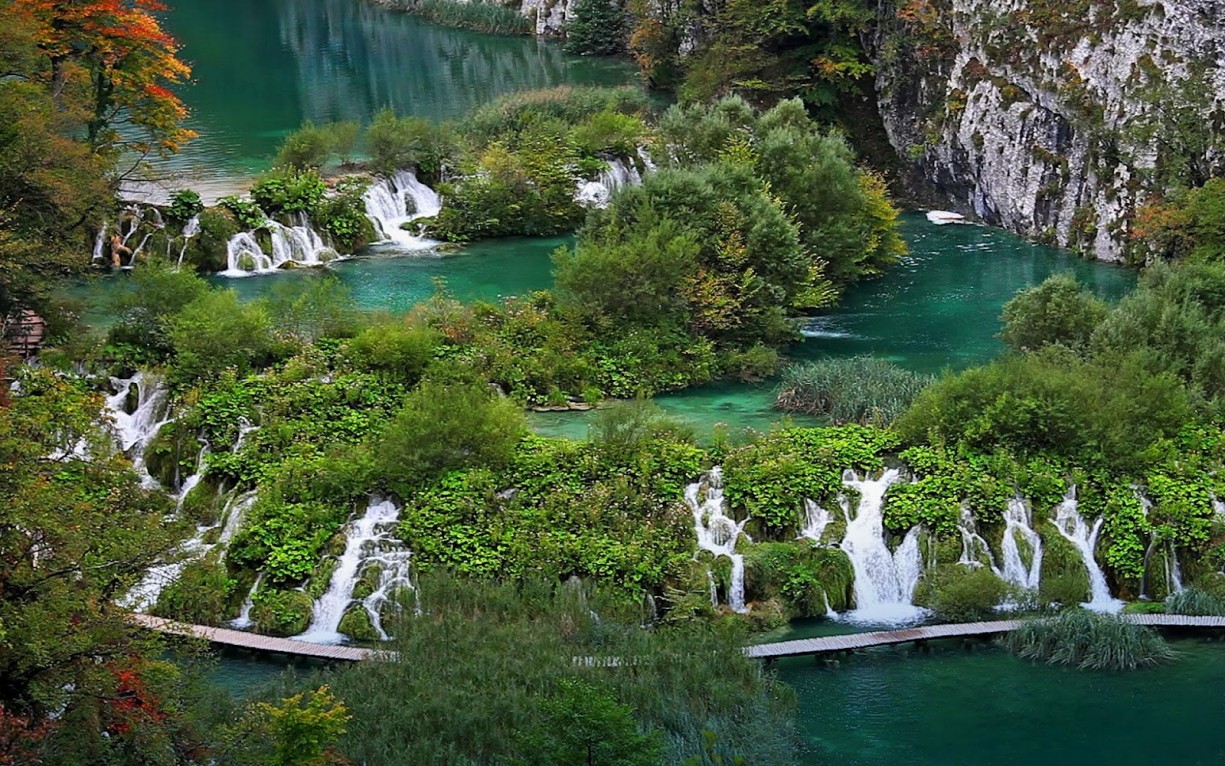 |
Marla's Note:
The picture
above was taken at the Plitvice Lakes National
Park in Croatia.
There
are two national parks in Croatia featuring dramatic
waterfalls. These parks are roughly
equidistant from Zadar. One is Plitvice
and the other is Krka.
Rick and
I will definitely be visiting one of these two parks
if there is any way possible way at all.
Our
current preference is Plitvice, but whichever one we
choose, they are both spectacular.
Considering our trip is a year away, I won't have
anything definite for a while, but at least you know
where we are headed that day.
If you
want to come along, let me know!
|
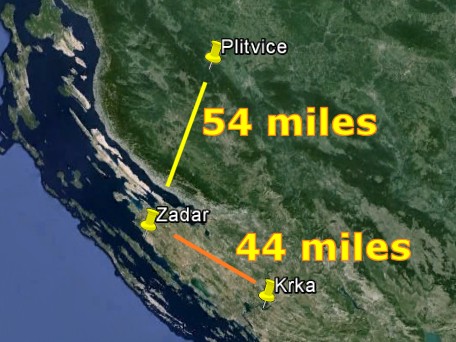 |
|
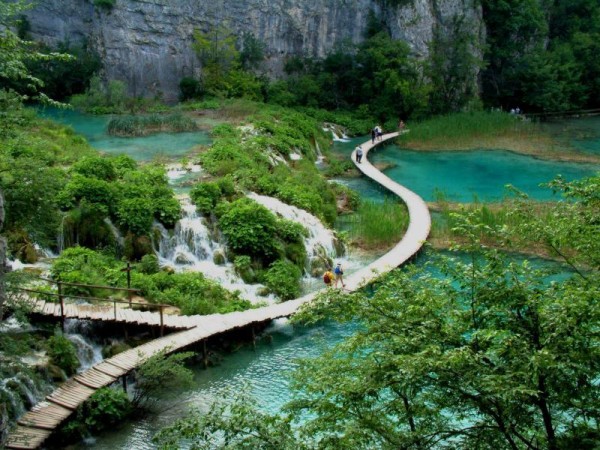
Plitvice National Park
|
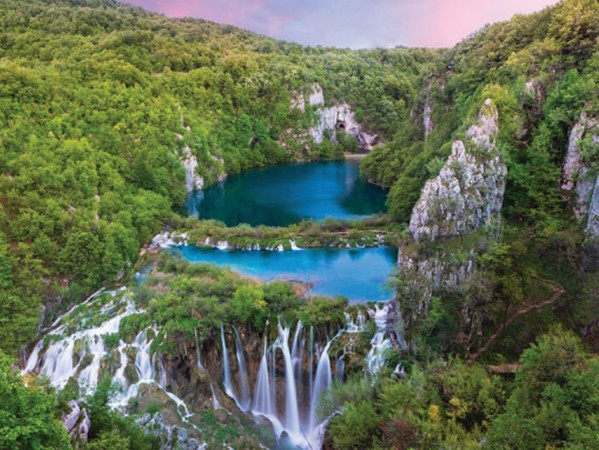
Krka
National Park
|
 |
Marla's Note:
With
Slovenia having a very narrow coastline, Koper
is the only port. It is extremely important to the
country.
Koper is
not only the major tourist entry point by water, it
is also a key point where Italy meets Slovenia.
Situated just three miles from the border, Koper's
identity is half-Slovenian, half-Italian.
|
Originally built
on an island surrounded by swampland that was later drained,
Koper was known as "Goat Island" when it was under Venetian
rule. Today the once fortified Old Town of
Venetian-influenced Koper has retained much of its grand
architecture from the 15th to 18th centuries.
The Praetor's
Palace, a blend of Gothic and Renaissance styles, proudly
rises above the grey limestone main square. Nearly the
Postojna Caves are the most popular underground
attraction in Europe.
Another attraction is the
Predjama Castle which
was carved out of a limestone cliff.
The largest town
on Slovenia's Adriatic coast, Koper was originally founded
during the Middle Bronze Age on what was then a rocky island
off the shore. Now a modern and attractive destination for
visitors, Koper still wears its history on its sleeve, most
notably the five centuries of Venetian rule, which has left
a distinctive mark on the town.
Strolling along
the narrow streets and past the imposing palaces and
monumental architecture of the old town, one could be
forgiven for thinking they were in Italy, especially given
the fact that all street signs are in both Slovene and
Italian.
Other fun things to do:
· Koper's small pebble beach, Mestno Kopališe lacks sand,
but it is a lovely place to soak up the sun or to swim in
the warm water.
You will find it on Kopalisko Nabreze, next to the marina.
There are large areas of lawns for sunbathing, and an
enclosed swimming area.
· Head to the beach at the seaside resort of Portoroz, just
a 25-minute drive from Koper.
· Explore the Slovenian Istra, which includes many villages,
traditional inns, vineyards, fruit groves, ethnological
museums and the regional park of Secovlje.
· Jog, cycle or walk along the Parenzana Path, which
connects all three coastal towns.
The cuisine here also stands in stark contrast to that found
in much of the rest of the country, with Mediterranean style
dishes typical of the Istrian region having pride of place
on most menus, accompanied by fine wine produced in the
nearby hills. However, despite its outward appearance, Koper
is of course a Slovene town first and foremost, and moreover
a quite important economically, given that it is the site of
Slovenia's only commercial port.
The town is
blessed with some wonderful fish and seafood restaurants.
Keep a look out for Koper-style fast food, Okrepcevalnica
bars; small, Italian-style places which serve great food of
the primo, second, piatti variety at lunchtime. You can
usually eat very well here for a fraction of the coast of a
restaurant. While not a tourist site in itself, the port
area to the north of the town is definitely an impressive
sight.
Koper's main
sight of interest is its Venetian-era old city, aptly named
Old Town. Its main street, Cevljarska is no
more than two or three meters wide in some places and is
packed from dawn to dusk. Cevljarska will lead you towards
the town's main square, Titov Trg (Tito Square), which is
dominated by the bell tower of the St. Mary's of the
Assumption Cathedral. Perhaps the most astonishing building
on the square is the hacienda-like Praetorian Palace, the
seat of the city's governor during the Venetian Republic.
Koper, the Old Town at least, is one big sight. From carved
grey Istrian limestone to narrow intertwining streets
leading to the main square, boasting the largest cathedral
in Slovenia, everything in Koper narrates a story of past
and present moments.
While wandering
and mixing with locals, visitors and hoards of day trippers,
you are liable to hear Italian spoken as well as Slovenian,
and there are Italian signs everywhere.
|
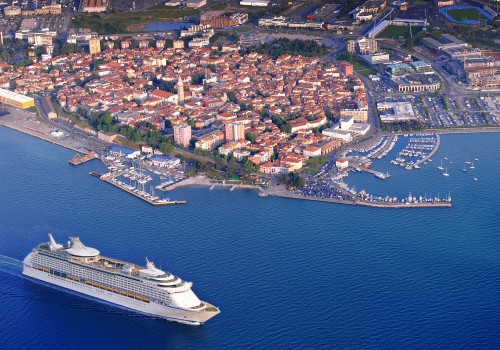
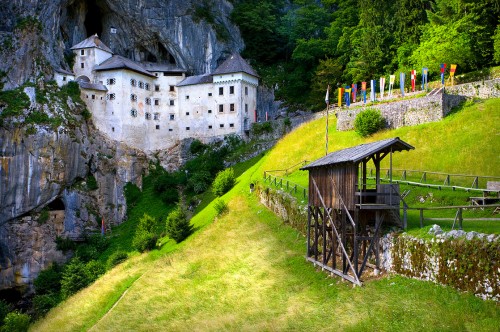
Predjama Castle
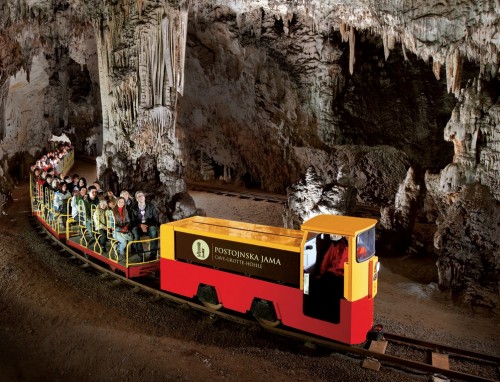
Postojna Caves
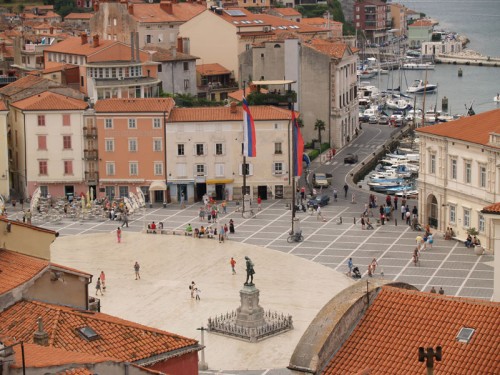
Koper Old Town
|
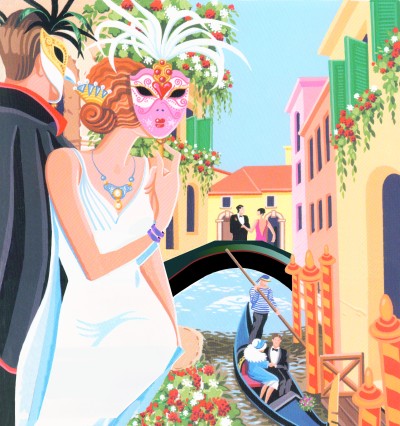
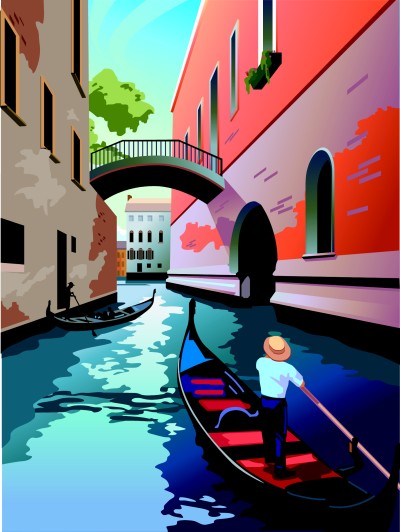
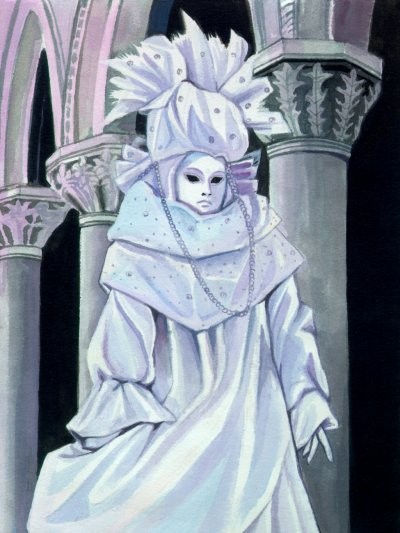
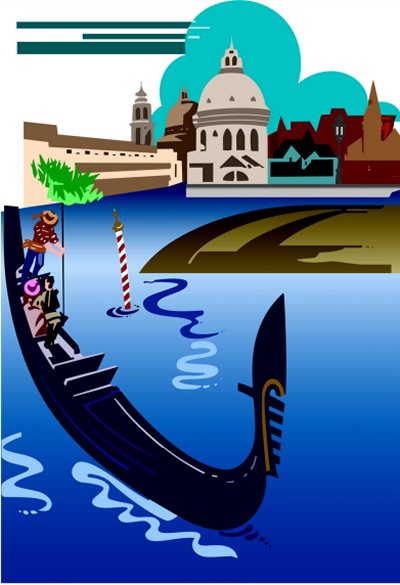
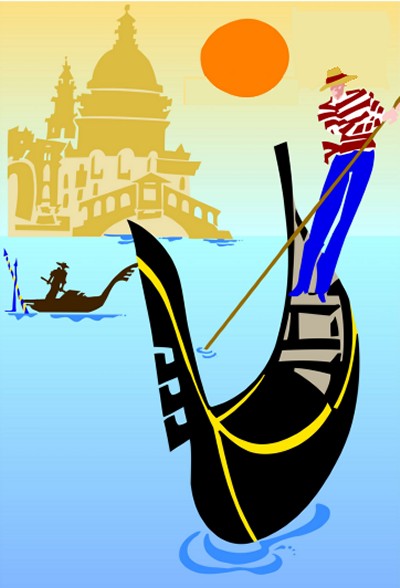 |
Marla's Note:
No one
needs me to explain that Venice is
considered one of the most romantic places to visit
in the world.
It
doesn't hurt that many parts of Venice are drop-dead
beautiful and those canals and gondolas are just too
wonderful for words.
Venice
is a wanderer's paradise. Its small, traffic-free
streets along the winding canals make for leisurely
walks to gaze at all the amazing sights.
|
 |
Indeed, Venice
is one of Italy's top travel cities. It is a
beautiful, romantic destination with many attractions.
You'll find many
magnificent churches and palaces, lively squares, and
interesting shops. Composed of 117 islands in the Venetian
Lagoon and held together by a series of canals, Venice is
like no other city in the world. Established more than 1,000
years ago by seafarers and Roman refugees, this magnificent
city continues to be the heart of Italian culture as well as
a mecca for hopeless romantics.
The Grand Canal
is like main street, cutting through the center of the city.
The object of admiration of all Europe, for centuries,
Venice is a living museum, exuding art from all its pores,
inviting you to dream, consider, admire, and respond.
Whether it is her Painters, Musicians, Writers, Sculptors,
or artisans of genius, simply everything of the city's soul
becomes permanently infused with the exquisite art of the
street.
The love of
beauty is omnipresent in Venice. Venice is art. The
art of Venice permeates daily life, from the doorbells, to
the wardrobe, to speech, thought, and laughter.
The Venetian is
an artist and it is no co-incidence that even today, the
Biennial, Mostra, as well as the art of the Glass created in
Murano still allows Venice to shine with one thousand fires
in the eyes of the whole world.
Venice is marvelous for this reason: you can walk for hours,
days or years and you will discover something new every
time. And this presents a definite problem: where to begin,
what to see, when, how? Everything is so picturesque and at
the same time it is so easy to get lost in this labyrinth of
more than 100 islands united by more than 400 bridges, the
whole on barely 7 by 4 kilometers!
Originally, there were not actual bridges in Venice. At
best, there were wooden footbridges without steps whose
construction and maintenance was the responsibility of the
neighbors. During this era, many in Venice moved about on
horseback. Then the transportation of goods and people was
predominantly made by boat, the result was the beginning of
true bridge construction.
Bridges were rounded and high enough so that small boats and
gondolas could pass underneath. But at the same time,
bridges become more arched and with steps that were not
adapted to the horses. The horses were displaced and
subsequently disappeared as means of transportation in the
heart of Venice.
Small, large, plump, straight or from side to side, stone,
wooden and metal, metal, decorated and sculpted or even
simple, the diversity of the bridges of Venice adds to the
beauty of the city and to its very romantic aspect.
Top Sights to See:
Rialto Bridge: The Rialto Bridge is the most famous
of the bridges that cross the Grand Canal. It is one of the
four bridges spanning the Grand Canal in Venice, Italy. It
is the oldest bridge across the canal, and was the dividing
line for the districts of San Marco and San Polo. The Rialto
Bridge is an elegant, arched stone bridge lined with arcades
on each side. The central archway at its pinnacle, accessed
via the wide stairs that rise from either side of the
bridge, serves as a lookout perch. Under the arcades are
numerous shops, many of which cater to the tourists who
flock here to see this famous bridge and its views of the
gondola-filled waterway of the Grand Canal. The Rialto
Bridge is lined with shops and is a gateway to the Rialto
Market.
Bridge of Sighs: Venice's
famous Bridge of Sighs was designed by Antonio Contino and
was built at the beginning of the seventeenth century.
Spanning the Rio di Palazzo (Palace River), the bridge was
intended to connect the Old Prison and interrogation rooms
in the Doge's Palace to the New Prison, situated directly
across the river.
There are a few
theories as to how the bridge got its name. The first one
involves the prisoners that walked across the bridge on
their way to the executioner. The prisoners would "sigh" as
they crossed the bridge, probably catching their last
glimpse of the outside world, many believed. Another story
says that if a couple kisses under the bridge while drifting
below on a gondola at sunset, they will enjoy eternal love.
Thus, the "sighs" are said to come from lovers who are
overwhelmed by the romance of the whole scene. The Bridge of
Sighs is a beautiful sight, stretching high above the canal.
It is known as one of the finest examples of bridge
architecture in the world.
Doge's Palace: The Doge's
Palace sits on a site that was once occupied by a 10th
century wooden stockade with watch towers and moat and,
later, another similar fort, both eventually destroyed by
fire and other disasters. The Palazzo Ducale was constructed
in two phases. The eastern wing, which faces the Rio di
Palazzo, was built between 1301 and 1340. The western wing,
facing the Piazetta San Marco, took an additional 110 years
to build and was completed in 1450. The architectural style
is generally referred to as Venetian Gothic - a gothic
structure with byzantine influences.
The facades include a lower section consisting of a ground
floor colonnade beneath an open loggia. Ornamentation is
everywhere.
Grand Canal: Known by Venetians
as Canalazzo - it is the major water-traffic corridor that
sweeps through this amazing city. The Canal Grande snakes
through the city of Venice in a large S shape, traveling
from the Saint Mark Basin on one end to a lagoon near the
Santa Lucia rail station on the other. This ancient waterway
measures 2.36 miles long and ranges from about 100-300 feet
wide.
In most places, the canal is approximately 16 feet deep. The
canal is an ancient waterway, lined with buildings - about
170 in all - that were mostly built from the thirteenth to
the eighteenth centuries. Most were constructed by wealthy
Venetian families. The best way to view the magnificent
buildings along the Grand Canal, of course, is to travel by
vaporetto (water bus) from one end to the other. (The #1 or
#2 both travel from end to end.) Many tourists also take
advantage of a romantic gondola ride along the waterway,
which is an especially memorable way to experience the Canal
Grande. Another option is to take one of the many water
taxis.
St Mark's Basilica: (Basilica
di San Marco in Italian) is the most famous of the many
churches of Venice and one of the finest examples of
Byzantine architecture in the world. Located just off the
Grand Canal, the gleaming basilica overlooks the Piazza San
Marco (St. Mark's Square) and adjoins the Doge's Palace. San
Marco is a cathedral, but has not always been so: it was the
Doge's chapel until it became the seat of the Archbishop of
Venice in 1807. St. Mark's Basilica is modeled after
Constantine the Great's Church of the Holy Apostles (no
longer standing) and the Hagia Sophia in Istanbul.
It has a floor
plan in the shape of a Greek cross, with a dome over the
crossing and another dome on each of the four arms. Each arm
has a central aisle and two side aisles. A narthex wrapped
around the west end disguises the cross shape but creates a
wide, flat surface for the grand facade.
St Mark's Square: Piazza San Marco, or Saint Mark's
Square, is the largest and most important square in Venice.
Being the widest patch of flat, open land in a waterborne
city, St. Mark's Square has long been an important meeting
place for the citizens of Venice and the design showcase for
Venice's aristocracy. It is most impressive from its sea
approach, a legacy from the centuries that Venice was a
powerful maritime republic. Venice's principal square is
full of history and surrounded by great architecture.
Several of
Venice's major sights are located here, so the square is
often crowded with tourists. Piazza San Marco has famously
been called "the drawing room of Europe," a quote attributed
to Napoleon. The square is named after the unusual and
stunning Basilica San Marco that sits on the east end of the
square. The slender Campanile di San Marco, the basilica's
bell tower, is one of the square's most recognizable
landmarks.
Take a
Gondola Ride: A gondola ride is the one Venetian tourist
trap everyone falls into willingly. A long, sleek, black,
slightly crooked, looking like a cross between a canoe and a
coffin, the single oar is worked by a professional
gondoliere.
That's the
Venetian gondola, the primary form of transportation in
Venice from the 12th century until speedboats roared into
the canals in the late 20th. Touristy or not, your visit to
Venice isn't complete until you take one of these
time-honored water taxis for a spin. The average gondola
ride lasts 40 minutes. Make absolutely sure you agree upon
the price and the duration of the trip before you step into
the boat, write it down, and go by your watch (strangely,
the gondoliers' often run fast). The average price is 80
Euros for a 40 minute ride.
|
Marla's Notes:
Celebrity
Cancellation Charges:
1. UNTIL JUNE 25, 2016 -- NONE
2. JUNE 26, 2016 - JULY 13, 2016-- $450 PER GUEST
DEPOSIT
3. JULY 14, 2016 - AUGUST 10, 2016 -- 50% OF TOTAL
FARE
4. AUGUST 11, 2016 -- 100% OF TOTAL FARE
SSQQ Travel Service Charges:
1. $50 Charge for any Change
2. $100 Per Person for cancellation of trip
Marla Archer
"SSQQ Travel"/West University Travel
713 862-4428 (direct line)
|
|
|
|